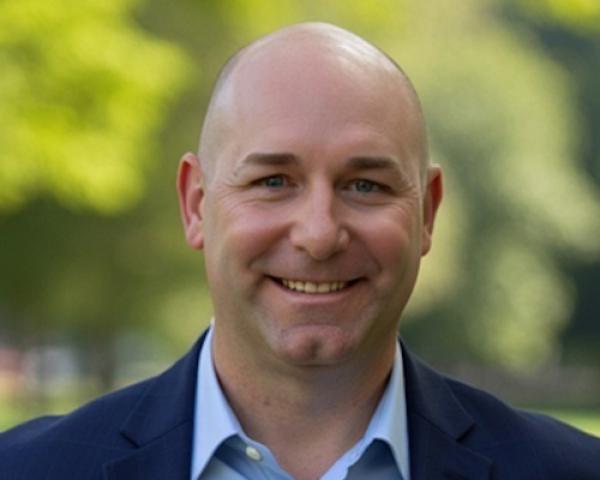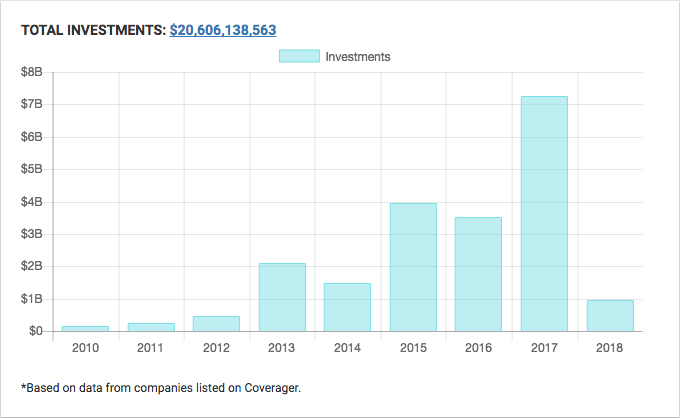Reinsurance: Dying... or in a Golden Age?
Catastrophes have put pressure on the industry, but the changing nature of risk opens up historic opportunities.

Catastrophes have put pressure on the industry, but the changing nature of risk opens up historic opportunities.

Get Involved
Our authors are what set Insurance Thought Leadership apart.
|
Partner with us
We’d love to talk to you about how we can improve your marketing ROI.
|

Pascal Millaire is the CEO of CyberCube, a Symantec Ventures company dedicated to providing data-driven cyber underwriting and aggregation management analytics to the global insurance industry.
A more strategic approach to cost management will become an imperative for growth in 2018 and beyond.

Get Involved
Our authors are what set Insurance Thought Leadership apart.
|
Partner with us
We’d love to talk to you about how we can improve your marketing ROI.
|

Jamie Yoder is president and general manager, North America, for Sapiens.
Previously, he was president of Snapsheet, Before Snapsheet, he led the insurance advisory practice at PwC.

Francois Ramette is a partner in PwC's Advisory Insurance practice, with more than 15 years of strategy and management consulting experience with Fortune 100 insurance, telecommunications and high-tech companies.
A positive customer experience isn’t driven by the slickest photo app, drones or the most streamlined first notice of loss (FNOL) process.

Get Involved
Our authors are what set Insurance Thought Leadership apart.
|
Partner with us
We’d love to talk to you about how we can improve your marketing ROI.
|

David Pieffer is head of the property & casualty practice at J.D. Power. He is responsible for leading the development and expansion of syndicated studies and proprietary P&C insurance industry services in North America.
While insurtech remains nascent, in many ways, a subset of firms is producing results, gaining momentum and making an impact.

The investment and activity related to the insurtech movement that began about four to five years ago show few signs of abating. If anything, the movement is moving into a new phase. But before even evaluating whether insurtech is maturing, it is important to set some definitions and boundaries. Although some consider any tech firm with insurance solutions to be “insurtech,” for our purposes, we are focusing on recent insurtech startups, typically those that have been launched in the last five years. The question posed here is whether these startups are collectively maturing and moving beyond the initial stages of a startup effort.
To answer that question, I will conduct my own point-counterpoint before drawing a conclusion. There are arguments to be made that insurtech is maturing, but a case can also be made that it is still nascent and, dare I say, immature?
See also: Where Will Unicorn of Insurtech Appear?Yes — Insurtech Is Maturing
A strong case can be made that insurtech is maturing. For starters, we are almost five years into the activities related to insurtech, and much experience has been gained by entrepreneurs, investors, insurers and others. In the early days, there were a small number of new ventures and limited involvement by incumbent insurance industry players. Now there are more than 1,200 insurtech startups that SMA tracks, approximately 50 (re)insurers with insurtech investment arms and many more insurers engaging in partnerships, pilots and insurtech strategies. Although there are still new insurtechs being regularly announced, the total number has stabilized in the range of 1,200 due to exits of various kinds. This stabilization, in itself, is an indication that the movement is maturing. Another important development is that winners are beginning to emerge. SMA expects many of the startups to ultimately fail or be absorbed by another entity – perhaps as many as 80% to 90% of the total. But there are currently around 50 that are gaining traction and have the funding to support growth and success in the industry. Eventually, there may be 100 to 200 prominent firms started in the last five years that become more permanent players in the industry.
No — Insurtech Is Still in Early Stages
The counter-argument is also strong – and supports the reasoning that insurtech is still not maturing. Exhibit A for this stance is that there are still only a small number of visible use cases that have made a difference in the industry. True, there are many interesting companies and projects, but there are few case studies that make you say: “Wow!” The impact on individual insurers or overall financial metrics is tiny. Another indicator of the relative immaturity is the lack of industry experience at many of the newest startups. Insurtechs that have been around for a few years have often gained more insights into the complexity of the industry and have brought industry veterans onto the team. And, of course, they have gained their own experience through engaging with insurers over this time. But many of the newer insurtechs still have a negative view of the industry and believe they will disrupt an industry that they see as a dinosaur. A final point in the counter-argument is that there are still vast sums of money set aside in funds to invest in insurtech. Insurers have billions set aside that is not yet invested. New venture funds are being formed even now. Certainly, much of these funds will be allocated to the firms that are emerging as winners, but there will be just as much going into new ventures, resulting in continued momentum over the next few years.
See also: Insurtech Presents Major OpportunitiesConclusion
I don’t want to cop out on the conclusion, but I see elements of both maturity and immaturity in the insurtech startup movement. What we may see is a bifurcation, with a subset of firms producing results, gaining significant funding and making a measurable impact on the industry. In the meantime, there will be a second (larger) group of startups still looking for that big win, that big funding round and the momentum to move them into the winner's circle.
Get Involved
Our authors are what set Insurance Thought Leadership apart.
|
Partner with us
We’d love to talk to you about how we can improve your marketing ROI.
|

Mark Breading is a partner at Strategy Meets Action, a Resource Pro company that helps insurers develop and validate their IT strategies and plans, better understand how their investments measure up in today's highly competitive environment and gain clarity on solution options and vendor selection.
If we don’t attack the cost problems because we believe nothing can be done, we will lose the agency system as we know it.

Get Involved
Our authors are what set Insurance Thought Leadership apart.
|
Partner with us
We’d love to talk to you about how we can improve your marketing ROI.
|

Mike Manes was branded by Jack Burke as a “Cajun Philosopher.” He self-defines as a storyteller – “a guy with some brain tissue and much more scar tissue.” His organizational and life mantra is Carpe Mañana.
Even if you're having trouble innovating in claims processes, you may be able to find an insurtech that will do it for you.

Get Involved
Our authors are what set Insurance Thought Leadership apart.
|
Partner with us
We’d love to talk to you about how we can improve your marketing ROI.
|

Brent Williams is the founder and CEO of Benekiva, a configurable SaaS technology platform that transforms the end-to-end life claims and servicing experience. To learn more, download Benekiva’s white paper: “Elevate Your Claims Management with Benekiva's Modern Solutions”
If you had an hour with an expert on a key subject, would you spend it watching a PowerPoint together? Not likely.

Get Involved
Our authors are what set Insurance Thought Leadership apart.
|
Partner with us
We’d love to talk to you about how we can improve your marketing ROI.
|
"Risktech" has emerged as technology solutions that will help mitigate risk by more effectively navigating the digitization of the risk profile of organizations.

"My light bulb moment was when I realized that as important as insurance—and by extension insurtech—is, 'risktech' is the future of technology that will be the most helpful to risk leaders going forward.
"I am not talking about today’s popular governance, risk management and compliance systems framework, but rather the technology solutions that will help mitigate risk by more effectively navigating the digitization of the risk profile of organizations."
This was an insight shared by Chris Mandel, Senior VP of Strategic Solutions for Sedgwick, in a recent article, "Insurtech or Risktech," published by Risk & Insurance. Chris's lightbulb moment came during a discussion that occurred during an event on technology hosted by Siemens in Houston, the result of a collaboration between Siemens and Insurance Thought Leadership.
Chris closes this piece with what amounts to a leadership challenge for risk managers in verticals other than insurance: "The good news is that these solutions are already beginning to emerge…. The remaining question is whether or not risk leaders are up to this new world challenge and how they’ll respond."
The basis for Chris's challenge to risk managers certainly also applies to corporate leaders across the insurance industry.
Never before have leaders faced a more demanding or compelling challenge to innovate. But, to do so, they must suspend a host of common beliefs: that an innovator first requires size, a particular culture, an abundance of resources or the completion of internal digitization efforts.
A few quick snapshots from the Innovator's Edge shows why those beliefs must be set aside.
In a relatively short list of technology-based firms, the total funding into their success exceeds $78 billion, spanning 2,096 firms. Look at the mix of technology applications.
Many fall outside of what many might classify as insurtechs, yet, to echo Chris’s phrase, these are very much "risktechs" in that many of these early-stage firms will affect risk—and by extension the insurance industry—to a far greater degree than many of the process improvement benefits being delivered to insurers via insurtechs. Note that many of these companies started with teams of less than five, yet will deliver massive amounts of innovation without meeting many of the common beliefs about how to produce it.
To highlight the need for broader thinking about innovation, consider the next chart, based on 547 early-stage entities with a funding total exceeding $29 billion. This chart shows that the funding supporting autonomous vehicle startups exceeds the selected insurance categories combined.
While insurtech companies will yield benefits to insurance operations in the near term, in the long term the application of "risktech," such as autonomous vehicles, potentially rewrites the rules of the entire insurance industry.
Since 2000, the cost of technologies has fallen by a factor of 3,000X while the computational capabilities have grown by a factor of 10,000X, and the insurtechs and risktechs riding those waves will provide the insurance industry with exponential growth opportunities. We maintain that adopting the best practices in insurance innovation is achievable, regardless of the size and perceived resource constraints of an insurance company.
Corporate leaders across the entire insurance value chain would be well served to consider these trends in the context of their legacy. Who will be remembered as the leaders who embraced growth via innovation vs. those who chose not to? Which path truly represents the more significant systemic risk to an enterprise: embracing the possibilities of innovation, or staying the course while competitors become innovators and transform their future?
Guy Fraker
Chief Innovation Officer
Insurance Thought Leadership
p.s. I'll be speaking about the tremendous opportunities for insurance innovation in an upcoming webinar in partnership with Johnson Lambert. Register to attend and join the conversation.
Get Involved
Our authors are what set Insurance Thought Leadership apart.
|
Partner with us
We’d love to talk to you about how we can improve your marketing ROI.
|

Insurance Thought Leadership (ITL) delivers engaging, informative articles from our global network of thought leaders and decision makers. Their insights are transforming the insurance and risk management marketplace through knowledge sharing, big ideas on a wide variety of topics, and lessons learned through real-life applications of innovative technology.
We also connect our network of authors and readers in ways that help them uncover opportunities and that lead to innovation and strategic advantage.
Self-funded firms focus on limited problems, not disruption, but that still leaves a host of issues to address without competition from VCs.

 I love it. There is nothing better than reading about a newly funded startup from a large VC firm.
It takes a ton of blood, sweat and tears to get an investment from a high-profile VC, and it is extremely rewarding for the startup that is able to secure funds from one.
These transactions tend to generate a lot of press (as they should). The money allows the startup to say, "We have proven ourselves by gaining some traction, have passed the intense due diligence of a VC firm and now have the runway to serve you." "You" in this sense typically means a carrier (in the case of a B2B insurtech startup).
There is another group of startups out there that do not get any funding press because they are self-funded.
These firms sometimes fall under the radar of carrier innovation teams that are scanning the market for meaningful solutions.
This article is NOT to take away from the funded companies. The majority of startups I work with are well-funded by VCs.
This article IS to educate on what a self-funded (i.e. bootstrapped) startup is, some advantages and challenges of working with one as well as how a carrier should assess a bootstrapped startup vs. a VC-funded one.
To help with this, I had the pleasure of interviewing Nick Mair, CEO and co-founder of Atticus DQPro. Atticus DQPro is a data monitoring platform designed specifically for the operational and regulatory needs of the insurance market. Atticus DQ Pro was bootstrapped from Nick’s first business, Atticus Associates, a consulting service to the London and specialty Insurance market.
What is a bootstrapped startup?
The self-funding can either come from a founder's personal finances or another revenue stream, such as consulting. A third approach is to fund a company based on the revenue from a product that you are building, though this can be harder to get off the ground. There are also circumstances whereby a company will bootstrap for a period of time to obtain more attractive fundraising terms (more on this later).
For Atticus DQPro, Nick had an established consulting business in the U.K. insurance market. The focus was on technological implementation and transformational change for carriers.
See also: Where Are the Insurtech Start-Ups?
By gaining on-the-ground understanding of how carriers work and what their problems were, Nick and his team were able to identify a solution for the specific need their clients were facing.
They got the idea and the funding from their consulting business.
What are some of the advantages to working with a bootstrapped insurtech startup?
"When you are bootstrapping, you are living on very limited amount of cash, and this means you are forced to solve a problem faster than a VC-funded outfit."
I found Nick’s statement to be quite interesting. Whether a startup is bootstrapped or VC funded, it must have a solution that is relevant to the carriers it is trying to work with. For those that have VC funding, their runway may be a bit longer. VCs are typically looking for a total return/liquidity event five to seven years from time of investment and good traction within one to three years. Bootstrappers do not have this same luxury.
"Many bootstrappers are looking to solve a real problem now rather than something truly disruptive," Nick said.
Nick explained that, from his experience, bootstrappers must get to product/market fit and real revenues faster. If they don’t (unless they have very deep pockets), then they could be out of business in less than a year.
Nick said bootstrappers are pushed to solve problems faster with the carriers they work with and then scale quickly after that.
Bootstrappers can mine opportunities that are not of interest to VCs because they’re sub-scale; e.g it’s a $5 million to $30 million opportunity rather than $100 million-plus. That window leaves a lot of niche problems for bootstrappers to fix without competition from funded startups. Nick said: "We can argue revolutionary change is required for our industry, but evolution can happen in parallel to solve real business problems now."
Lastly is the area of domain expertise. Many bootstrappers (as in the case with Nick) are industry specialists who have found a need within the domain and want to fix it. By contrast, many of the VC-funded startups come with founders with deep technology backgrounds. They have built great solutions that they believe can enhance or disrupt insurance yet lack the insurance industry domain expertise.
I do see this dynamic shifting. There are many more VC-funded startups with founders who come from within the insurance industry.
What are some of the challenges to working with a bootstrapped insurtech startup?
Not all VC-funded startups are looking for long-term disruptive solutions. Many have product/market fit solutions that solve the existing problems of today’s insurers.
These VC-funded startups can scale their teams (specifically in sales/business development) much more quickly than a bootstrapped model allows. Nick shared that this problem typically comes when the bootstrapper has around 10 clients and needs more resources to continue to market and deliver their product. This is typically the time that a bootstrapper needs to try to secure outside funding.
Nick’s view is that bootstrappers that can generate a decent annual recurring revenue (of roughly $1 million to $2 million) will be in a better position to get additional funding on more favorable terms (i.e. the startup already knows it has something that works and can be more confident when/if seeking additional funding to scale, through a VC, small private equity firm or carrier). Getting to that point and knowing when to make that call can be hard for a bootstrapper.
Another disadvantage of working with one is that the team is primarily the management team and advisory board. Having a VC-funded startup brings the experience of the firm that invested. A VC firm has massive skin in the game for the startups to succeed.
If the VCs are with a reputable firm, they have dealt with startups for a long time and likely had some good exits. They will be able to bring a perspective that the founders may not have and may not have access to within their own management team/advisory board.
What does this mean for carriers? Should they partner with a bootstrapped insurtech startup or a VC-funded one?
A few months ago, I wrote An insurance carrier’s guide to working with an insurtech startup. The first point is to "understand and prioritize your organization’s needs." I would like to reiterate this. A carrier must have a problem/area that needs to be addressed. If the startup fills this need, then I said to move to the next, which is due diligence.
If the startup is VC-funded, this is a good first step.
VCs have ridiculous due diligence processes (just ask any founder what the process is like). If a startup has secured a Series A or higher from a reputable VC firm, it has passed a certain test. The VC will have looked at the business plan, legal entity setup and founding team to the nth degree (among other things). A carrier must perform its own due diligence but has the assurance that someone else has also done a fair amount.
For a bootstrapped one, it is important to know where the funding is coming from and what sort of runway the startup has.
For both, it is important to know what sort of engagements they have done. If they are only in pilot stage with the carriers they are working with, this is OK. Ask what sort of results they can share with you from the pilots they have done/are doing to indicate whether that is the sort of result you are looking for.
Additionally, when looking at the team of the startup, it is extremely valuable if some of the founders/team members have actual insurance industry experience. This will add another element of understanding of the carrier’s business while working together.
Lastly, carriers should start with a pilot when working with a startup (whether funded or bootstrapped). This is a good way to validate the work the startup says it is going to do with you before going fully commercial.
Summary
There are tons of startups out there. It’s such an exciting time to be in this business and to be working with such smart and energetic people who are trying to make insurance better for consumers.
I have deep admiration and respect for all startups, whether they are funded by VCs or bootstrapped. It takes a lot of courage and perseverance to start a business, especially in one as highly regulated as ours.
See also: What’s Your Game Plan for Insurtech?
There are many reasons why a startup would be bootstrapped vs. raising funds.
The last point Nick made to me was that "self-funded can mean bootstrapped by design/choice rather than trying to get funded. Founder reasons can be keeping control, better work/life balance or greater freedom."
For those thinking about starting an insurtech startup, have a look at this article that Nick shared with me.
And for those carriers looking to partner with a startup, do your due diligence and make sure you are filling a need and putting the carrier in a better place as a result. VC-funded startups and bootstrapped ones are both good options, and you should consider both for your innovation efforts.
This article first appeared at Daily Fintech.
I love it. There is nothing better than reading about a newly funded startup from a large VC firm.
It takes a ton of blood, sweat and tears to get an investment from a high-profile VC, and it is extremely rewarding for the startup that is able to secure funds from one.
These transactions tend to generate a lot of press (as they should). The money allows the startup to say, "We have proven ourselves by gaining some traction, have passed the intense due diligence of a VC firm and now have the runway to serve you." "You" in this sense typically means a carrier (in the case of a B2B insurtech startup).
There is another group of startups out there that do not get any funding press because they are self-funded.
These firms sometimes fall under the radar of carrier innovation teams that are scanning the market for meaningful solutions.
This article is NOT to take away from the funded companies. The majority of startups I work with are well-funded by VCs.
This article IS to educate on what a self-funded (i.e. bootstrapped) startup is, some advantages and challenges of working with one as well as how a carrier should assess a bootstrapped startup vs. a VC-funded one.
To help with this, I had the pleasure of interviewing Nick Mair, CEO and co-founder of Atticus DQPro. Atticus DQPro is a data monitoring platform designed specifically for the operational and regulatory needs of the insurance market. Atticus DQ Pro was bootstrapped from Nick’s first business, Atticus Associates, a consulting service to the London and specialty Insurance market.
What is a bootstrapped startup?
The self-funding can either come from a founder's personal finances or another revenue stream, such as consulting. A third approach is to fund a company based on the revenue from a product that you are building, though this can be harder to get off the ground. There are also circumstances whereby a company will bootstrap for a period of time to obtain more attractive fundraising terms (more on this later).
For Atticus DQPro, Nick had an established consulting business in the U.K. insurance market. The focus was on technological implementation and transformational change for carriers.
See also: Where Are the Insurtech Start-Ups?
By gaining on-the-ground understanding of how carriers work and what their problems were, Nick and his team were able to identify a solution for the specific need their clients were facing.
They got the idea and the funding from their consulting business.
What are some of the advantages to working with a bootstrapped insurtech startup?
"When you are bootstrapping, you are living on very limited amount of cash, and this means you are forced to solve a problem faster than a VC-funded outfit."
I found Nick’s statement to be quite interesting. Whether a startup is bootstrapped or VC funded, it must have a solution that is relevant to the carriers it is trying to work with. For those that have VC funding, their runway may be a bit longer. VCs are typically looking for a total return/liquidity event five to seven years from time of investment and good traction within one to three years. Bootstrappers do not have this same luxury.
"Many bootstrappers are looking to solve a real problem now rather than something truly disruptive," Nick said.
Nick explained that, from his experience, bootstrappers must get to product/market fit and real revenues faster. If they don’t (unless they have very deep pockets), then they could be out of business in less than a year.
Nick said bootstrappers are pushed to solve problems faster with the carriers they work with and then scale quickly after that.
Bootstrappers can mine opportunities that are not of interest to VCs because they’re sub-scale; e.g it’s a $5 million to $30 million opportunity rather than $100 million-plus. That window leaves a lot of niche problems for bootstrappers to fix without competition from funded startups. Nick said: "We can argue revolutionary change is required for our industry, but evolution can happen in parallel to solve real business problems now."
Lastly is the area of domain expertise. Many bootstrappers (as in the case with Nick) are industry specialists who have found a need within the domain and want to fix it. By contrast, many of the VC-funded startups come with founders with deep technology backgrounds. They have built great solutions that they believe can enhance or disrupt insurance yet lack the insurance industry domain expertise.
I do see this dynamic shifting. There are many more VC-funded startups with founders who come from within the insurance industry.
What are some of the challenges to working with a bootstrapped insurtech startup?
Not all VC-funded startups are looking for long-term disruptive solutions. Many have product/market fit solutions that solve the existing problems of today’s insurers.
These VC-funded startups can scale their teams (specifically in sales/business development) much more quickly than a bootstrapped model allows. Nick shared that this problem typically comes when the bootstrapper has around 10 clients and needs more resources to continue to market and deliver their product. This is typically the time that a bootstrapper needs to try to secure outside funding.
Nick’s view is that bootstrappers that can generate a decent annual recurring revenue (of roughly $1 million to $2 million) will be in a better position to get additional funding on more favorable terms (i.e. the startup already knows it has something that works and can be more confident when/if seeking additional funding to scale, through a VC, small private equity firm or carrier). Getting to that point and knowing when to make that call can be hard for a bootstrapper.
Another disadvantage of working with one is that the team is primarily the management team and advisory board. Having a VC-funded startup brings the experience of the firm that invested. A VC firm has massive skin in the game for the startups to succeed.
If the VCs are with a reputable firm, they have dealt with startups for a long time and likely had some good exits. They will be able to bring a perspective that the founders may not have and may not have access to within their own management team/advisory board.
What does this mean for carriers? Should they partner with a bootstrapped insurtech startup or a VC-funded one?
A few months ago, I wrote An insurance carrier’s guide to working with an insurtech startup. The first point is to "understand and prioritize your organization’s needs." I would like to reiterate this. A carrier must have a problem/area that needs to be addressed. If the startup fills this need, then I said to move to the next, which is due diligence.
If the startup is VC-funded, this is a good first step.
VCs have ridiculous due diligence processes (just ask any founder what the process is like). If a startup has secured a Series A or higher from a reputable VC firm, it has passed a certain test. The VC will have looked at the business plan, legal entity setup and founding team to the nth degree (among other things). A carrier must perform its own due diligence but has the assurance that someone else has also done a fair amount.
For a bootstrapped one, it is important to know where the funding is coming from and what sort of runway the startup has.
For both, it is important to know what sort of engagements they have done. If they are only in pilot stage with the carriers they are working with, this is OK. Ask what sort of results they can share with you from the pilots they have done/are doing to indicate whether that is the sort of result you are looking for.
Additionally, when looking at the team of the startup, it is extremely valuable if some of the founders/team members have actual insurance industry experience. This will add another element of understanding of the carrier’s business while working together.
Lastly, carriers should start with a pilot when working with a startup (whether funded or bootstrapped). This is a good way to validate the work the startup says it is going to do with you before going fully commercial.
Summary
There are tons of startups out there. It’s such an exciting time to be in this business and to be working with such smart and energetic people who are trying to make insurance better for consumers.
I have deep admiration and respect for all startups, whether they are funded by VCs or bootstrapped. It takes a lot of courage and perseverance to start a business, especially in one as highly regulated as ours.
See also: What’s Your Game Plan for Insurtech?
There are many reasons why a startup would be bootstrapped vs. raising funds.
The last point Nick made to me was that "self-funded can mean bootstrapped by design/choice rather than trying to get funded. Founder reasons can be keeping control, better work/life balance or greater freedom."
For those thinking about starting an insurtech startup, have a look at this article that Nick shared with me.
And for those carriers looking to partner with a startup, do your due diligence and make sure you are filling a need and putting the carrier in a better place as a result. VC-funded startups and bootstrapped ones are both good options, and you should consider both for your innovation efforts.
This article first appeared at Daily Fintech.
Get Involved
Our authors are what set Insurance Thought Leadership apart.
|
Partner with us
We’d love to talk to you about how we can improve your marketing ROI.
|

Stephen Goldstein is a global insurance executive with more than 10 years of experience in insurance and financial services across the U.S., European and Asian markets in various roles including distribution, operations, audit, market entry and corporate strategy.
While AI will automate processes, it will enhance—not replace—humans in the marketing and distribution of insurance.

Get Involved
Our authors are what set Insurance Thought Leadership apart.
|
Partner with us
We’d love to talk to you about how we can improve your marketing ROI.
|

Gregory Bailey is president and CPO at Denim Social. He was licensed to sell insurance at the age of 20, continued as an agent in the industry for the next nine years and then stepped into the corporate world of insurance.